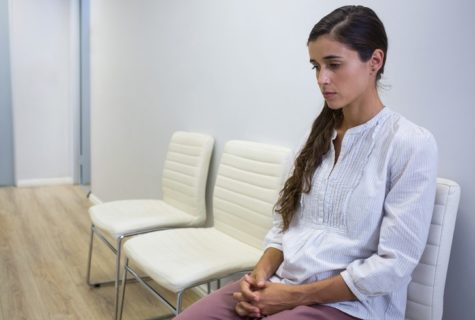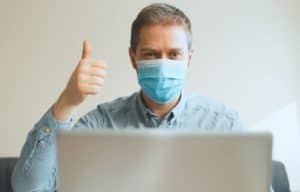
In a few short months, COVID-19 has turned your practice day-to-day upside down – clinically, operationally and financially. At least now there is light at the end of the tunnel.
Whether you closed your practice completely, or were working on an abbreviated schedule, the decisions you make over the next few weeks will have a massive impact on your ability to get patients back and resume “normal” operations.
To master this next phase of the pandemic, having a well-thought out plan can make all of the difference in the speed and ultimate success of your practice ramp up in a manner that protects patients, follows employee regulations, prevents disease spread, and rebuilds your revenue.
The good news is you don’t have to develop your post-COVID-19 practice ramp up plan on your own. Below you’ll find a checklist of actionable strategies to help you succeed during this transition. The proven advice below is provided by Infectious disease practitioner, Javeed Siddiqui, MD, and practice management expert consultant and trainer, Owen Dahl, MBA, LFACHE, CHBC, LSSMBB, and should make your post-COVID-19 transition easier and more successful.
Protect Your Workers, Patients
You need to keep seeing patients to stay in business, and for that you need healthy workers. Infection prevention starts with your staff! Here are some proven strategies to help keep your employees—and patients—safe during COVID-19:
Health Checks, PPE, Social Distancing
- Pre-Screen employees. Prior to each shift, prescreen all employees with a temperature check and symptom assessment. If possible, perform the temperature check before the employee enters your practice.
- Screen everyone. Make it your policy that everyone who works at your office must be screened—no exceptions. PERIOD. This includes all staff, management, physicians, patients, caregivers, etc.
- Multiple temperature checks. Consider testing staff twice each day, once at the start and again about half-way through. Then, log temperature check results for each employee as an ongoing reference. This documentation could also be helpful should you need proof of your infection prevention efforts.
- Don’t self-report. Nobody should take their own temperature. Team members can take each other’s temperature, or you can designate one person to take temperatures as long as someone else records theirs. Also, don’t take verbal communications of temperatures. The same person responsible for taking the temperature should record it right after it is available.
- Keep a daily symptom log. Designate one person from your office to check-in with staff and assess employee symptoms once each shift. Any symptoms conveyed by the employee or identified by the assessor should be logged each day by employee. Also, just like temperature checks, someone else should get symptoms from the assessor.
- Make masks mandatory. Supply masks for all your employees to wear while at work. If you are experiencing a shortage, allow employees to bring their own, especially if they aren’t in direct contact with patients. Ask patients to wear masks as well can also be helpful. It is important that you clearly convey this expectation to patients in a variety of ways to ensure they come prepared for their appointment.
- Provide PPE. Employees should wear appropriate personal protective equipment (PPE) depending on their degree of exposure to anyone that might be potentially infected. Certainly, any employee who has contact with a symptomatic patient should wear appropriate PPE during the contact.
- Send sick employees home. Make sure your staff knows that if they have any symptoms of the virus, you expect them to stay home. This is the best way to avoid spreading it to other staff and patients. If an employee registers a fever or exhibits any symptoms of infection while at work, send them home—no exceptions.*Online training: For a walk through of each of the new COVID-19-related employer regulations and how you can use them to help your employees, AND protect your practice, sign up for this webinar from healthcare attorney and human resources expert, Kelly Holden.
- Limit shared resources. Whenever possible, don’t share headsets, phones, or other objects that require facial contact. If you must share a resource, be sure to disinfect the item EACH time it transitions.
- Maintain Social Distancing: Employees should maintain 6 feet of distance between each other as work duties permit. Rearrange the breakroom seating to discourage congregating. Also, you should modify your waiting room to spread out chairs for patients, or consider having patients wait in their cars until you are ready to take them to an exam room.
Disinfect, Deep Clean, Document
You’re used to deep cleaning patient waiting areas and exam rooms, but seeing patients during COVID-19 requires you to go further. You must routinely wipe down and sanitize all bathrooms, staff offices, common areas, and shared electronic equipment (multiple times throughout the day depending on the number of people).
- Disinfection Checklist. To ensure that items are disinfected regularly, it can be helpful to create a protocol or checklist—in writing. This tool can be helpful to train your staff on what needs to be cleaned and ensure consistency in how areas are disinfected. Include details such as frequency, which cleaning supplies to use, and how often the tasks should be performed.
- Keep a log. Create and maintain a written log to keep track of your disinfection activities. Your log should have a separate line item for each area you have a documented disinfection checklist/process for (i.e. patient bathroom, exam room 1, etc). Next to each area you should include a blank space for the date and time the disinfection took place, and the name of the person that responsible to perform the task by day. Finally, it is important to have a space for the person responsible for the duties to add their initials to indicate the processes were completed. Keeping detailed documentation of specifically where, the date, what time, and who disinfected each area of your practice can be beneficial should you ever need to validate they took place.
- Follow CDC guidelines. Use cleaning agents recommended disinfection and sterilization processes provided by the CDC to ensure through cleaning.
- Wear proper PPE. Anyone who is disinfecting your practice should were appropriate PPE. Depending on the level of disinfection being conductions this could include: gloves, face mask, gown, etc.
- Clean between patients. Be sure to appropriately clean exam rooms between each patient encounter. This includes anywhere your patient was or anything they came contact with while at your office (i.e. bathroom, waiting area, door handles, light switches, faucet, etc.). This will take time, so be sure to account for this added time when scheduling or rotate exam rooms.
Rebuild, Restore Your Practice and Finances
Nobody knows how long it is going to take to make it back to “normal” after this pandemic. However, it’s pretty clear that pre-COVID-19 expectations are probably not going to work. You need to create a new business model for your practice, plan ahead, and prepare for different variables to help your practice survive the next phases of this virus.
- Create a practice plan. To get started, come up with a variety of scenarios you believe could occur (i.e. working at 50% capacity, shutdowns, etc.). Then, come up with a plan for what your practice will look like for each scenario. Think through what you will need to make it through each situation successfully. Effectively walking through these difficult situations before they occur will allow you to develop a more objective, successful plan. consistent with CDC guidelines
- Use what you know. Over the last few months, you may have identified what has and has not worked for your practice. Also, take the time to figure out what you and your team do best and what core services you offer. Use these findings to redefine what your clinical practice looks like during the situations you previously identified.
- Take advantage of financial resources. The Paycheck protection program (PPP), Economic Injury Disaster Loan (EIDL), the CARES Act, and CMS Accelerated and Advanced Payment Program are a number of the financial lifelines available to your practice during the COVID-19 pandemic. Take advantage of what’s available, and then track the money to make sure it goes to pay for what it’s intended. *Online training: Healthcare attorneys Daphne Kackloudis and Ashley Watson show you how to cut through the mass confusion of accessing CARES Act funds available to practices, and how you can be clear on what you are agreeing to when you sign on the dotted line.
- Change your reporting schedule. Estimating steady revenue streams when you are not sure of patients volume can be especially challenging if you are still relying on monthly financial reporting. Things are just changing too quickly for monthly projections to work. Instead, switch to daily and weekly reporting. In addition to projecting revenue, it can be helpful to project expenses. Take the time to map out the specific invoices that must be paid, the amount, and exactly when they must be paid pay. Then, go through your expenses and identify which ones you might be able to delay. Should you need to hold an invoice past its due date, it’s important to keep clear lines of communication open with the vendor. You could also ask if you could delay payment for a few months until things get more steady.
- Be prepared for CMS policy change. Over the last six weeks, CMS has had several significant rule modifications to help your practices better survive during COVID-19. Telehealth is one area that this has occured. In order to maintain social distancing, many practices started providing virtual services. Accordingly, Medicare relaxed guidelines and coding rules to make it easier for you to provide the services and get paid for them. For example, the CMS provision allowing a patient’s home as an originating site of care and suspending the Metropolitan Service Area exclusion rule are part of their COVID-19 Public Health Emergency Response Act.
Note: Just as quickly as these rules changed, they can change back. No one knows how these rules will shake out after the COVID-19 pandemic is over, but it is important that you stay on top of the changing rules to ensure your compliance.
There are so many unknowns to navigate these post COVID-19 waters — having a roadmap can seriously help you stay on track!
Note: The points outlined in this article are a great starting point. There is certainly more you can do to help your practice better manage patient needs and financial obligations – all while ensuring everyone’s safety. You can access more helpful advice from Dr. Siddiqui and Mr. Dahl during their FREE online session “Expert Strategies to Help Your Practice Survive COVID-19.” This complimentary training will provide you with step-by-step expert advice to help you overcome the unprecedented challenges caused by this pandemic.
COVID-19 Practice Resources For Compliance
 |
 |
 |
||||||||
| . | ||||||||||
| Keep Your Practice Open Using CARES Funds | Earn $110 For Patient Phone Call, New CMS Rule Applies | Stop Practice Penalties, Comply with New COVID-19 Employment Laws | ||||||||
|
|
|
